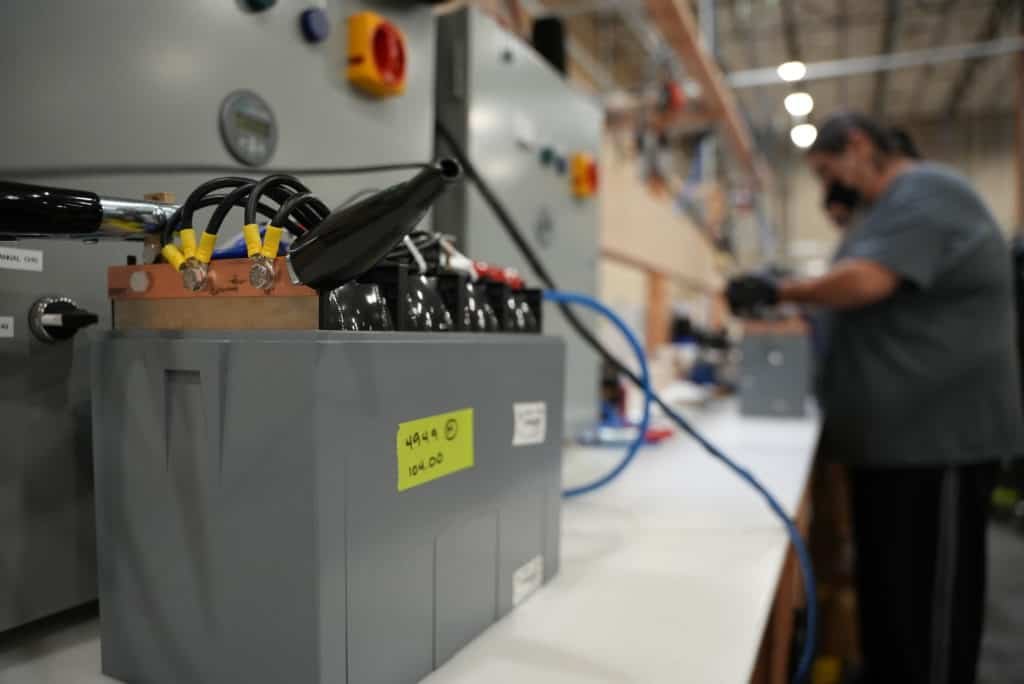Introduction: A Bold Leap Towards Self-Sufficiency
In a significant step to reduce reliance on imports, the U.S. government is vigorously supporting the development of local lithium-ion battery supply chains. This initiative reflects a growing recognition of the need for domestic production capabilities in an era characterized by geopolitical tensions and unpredictable trade dynamics.
NOVONIX: A Pioneering Venture
On December 17, NOVONIX, an Australian graphite manufacturer, announced via its website that it will receive a notable loan of $754.8 million (approximately 54.98 billion RMB) from the U.S. Department of Energy under the Advanced Technology Vehicle Manufacturing (ATVM) program. This funding is dedicated to the construction of a new facility in Chattanooga, Tennessee, aimed at producing synthetic graphite, a crucial component for lithium-ion batteries.
The Irreplaceable Role of Graphite
Graphite is a vital element in the composition of lithium-ion batteries, predominantly used as the anode material. Currently, no alternative materials have been discovered that can effectively replace graphite, underscoring its indispensable role in the global shift towards electric vehicles (EVs). According to Shanghai Metal Market (SMM), local battery material producers like NOVONIX are of paramount importance within the North American lithium battery supply chain.
Mitigating Supply Chain Risks
“Domestic manufacturing can significantly mitigate reliance on imported materials, effectively circumventing risks posed by geopolitical rivalries and trade disputes,” SMM emphasized. Furthermore, proposed tariff policies under the forthcoming Trump administration could increase the costs of imported materials, thereby protecting domestic enterprises. This scenario would likely compel battery and electric vehicle manufacturers to favor local suppliers over foreign ones, driving down production costs.
Impressive Production Capacity
Upon reaching full production, NOVONIX’s new facility is expected to yield approximately 31,500 tons of synthetic graphite annually, sufficient for powering the batteries of about 32,500 electric vehicles. The plant is projected to reach its maximum output by the end of 2028 and is anticipated to create 450 full-time operational positions alongside 500 construction jobs.
Sprouting from a Strong Foundation
Founded in Brisbane, Australia, NOVONIX operates on both the NASDAQ and the Australian Securities Exchange. Originally established as GraphiteCorp in 2012, the company rebranded after acquiring American companies Coulometrics and NOVONIX in 2017, evolving into a supplier of materials, equipment, and services for lithium-ion batteries.
The Expansion of Business Ventures
Currently, NOVONIX’s core operations encompass three main sectors: anode materials, battery technology solutions, and cathode materials. Notably, South Korea’s largest battery manufacturer, LG Energy Solution, holds 5.72% of NOVONIX’s shares, marking it as the third-largest stakeholder in the company.
Forging Strategic Partnerships
In 2023, NOVONIX entered into graphite supply agreements with notable battery manufacturers including Panasonic Energy, Stellantis, and PowerCo, a subsidiary of Volkswagen. In anticipation of meeting these orders, the company has already proposed establishing a facility in the southeastern U.S., supported by the recently acquired loan to facilitate the first phase of construction. Future plans aim to scale production capacity to 75,000 tons annually.
Chattanooga’s Riverside Facility
In addition to the new plant, NOVONIX is developing another graphite facility known as the Riverside plant in Chattanooga. Scheduled to commence commercial operations by 2025, the Riverside plant aims to increase its production to 20,000 tons annually to fulfill current customer commitments. This facility is poised to become North America’s first large-scale production site exclusively focused on high-performance synthetic graphite for batteries.
A Step Toward Fiscal Empowerment
Chris Burns, CEO of NOVONIX, remarked that securing loan support from the U.S. Department of Energy underscores a significant stride toward achieving an annual production goal of 150,000 tons of anode materials in North America.

Reducing Dependency on Chinese Imports
The loan obtained by NOVONIX closely aligns with the U.S. government’s objective of diminishing dependence on Chinese graphite imports. Currently, China stands as the largest producer and exporter of graphite globally, dominating the battery-grade graphite market with over 95% market share. Historically, the U.S. has been heavily reliant on Chinese imports for graphite.
Policy Changes and Export Restrictions
In a bid to reduce this dependency, last year, the U.S. announced restrictions on electric vehicle purchases benefiting from full tax credits for battery materials sourced from “foreign adversaries,” including China. Subsequently, in May of this year, the U.S. further increased tariffs on imports from China, including graphite—a move that has since faced delays in implementation.
Strategic Localization Initiatives
To achieve self-reliance in graphite production, the U.S. government is actively pursuing investments in graphite initiatives in countries other than China. Chris Burns highlighted that the government’s commitment to investing in the new facility further emphasizes the importance of localizing critical materials, such as graphite, within the battery supply chain.
Global Export Controls
Simultaneously, China has begun imposing restrictions on graphite exports. On December 3, the Ministry of Commerce of China announced strict controls on exports of dual-use items, including gallium, germanium, antimony, superhard materials, and graphite, specifically banning exports intended for U.S. military users or military purposes.
Conclusion: A Call to Action
Chris Burns noted that the recent constraints on graphite exports from China accentuate the urgent need to establish domestic graphite production capabilities in the United States.

























![[Cultivating Independence] The Rise of Domestic Lithium-Ion Battery Supply Chains in the U.S.](https://evergreenvitality.com/wp-content/uploads/2024/12/ev-battery-robots-factory-istock-1456466947-360x180.jpg)




![[Cultivating Independence] The Rise of Domestic Lithium-Ion Battery Supply Chains in the U.S.](https://evergreenvitality.com/wp-content/uploads/2024/12/ev-battery-robots-factory-istock-1456466947-750x375.jpg)








![[Cultivating Independence] The Rise of Domestic Lithium-Ion Battery Supply Chains in the U.S.](https://evergreenvitality.com/wp-content/uploads/2024/12/ev-battery-robots-factory-istock-1456466947-120x86.jpg)


